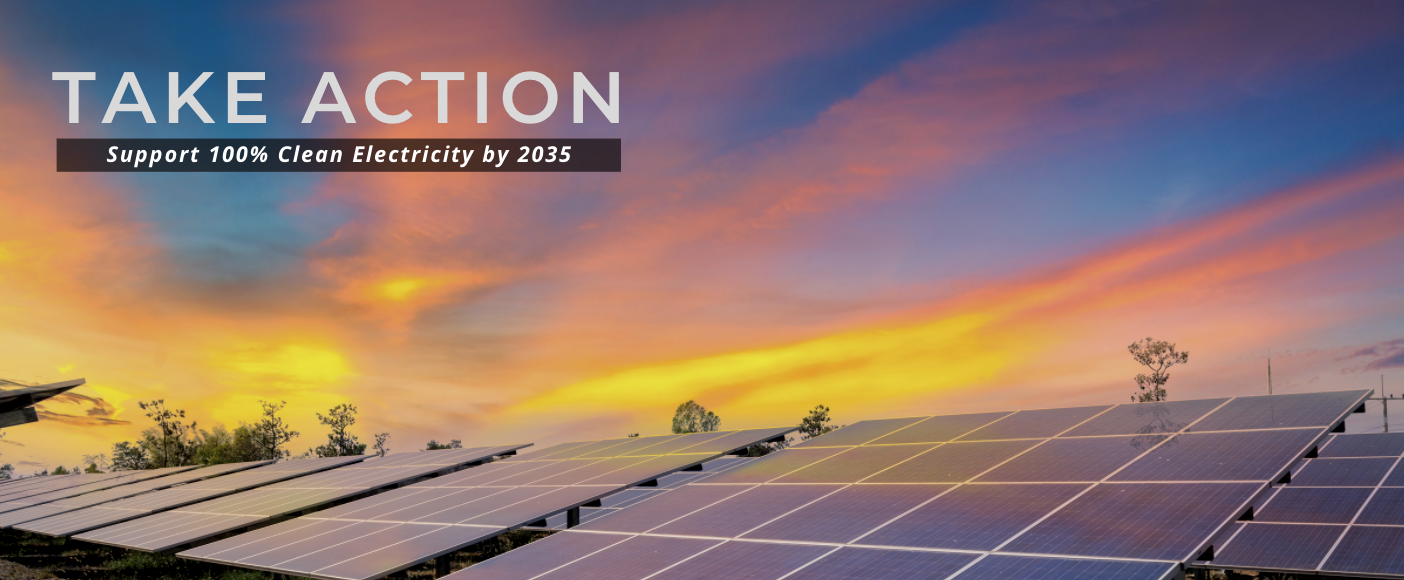This blog was co-written by Jennifer Rennicks, former Senior Director of Policy & Communications at the Southern Alliance for Clean Energy.
Chris Carnevale and Guest Blog | April 29, 2021 | Climate Change, Energy PolicyBack in 1961, President John F. Kennedy said of going to the moon: “That goal will serve to organize and measure the best of our energies and skills.” Today, people have begun to ask if solving the climate crisis will be our generation’s moonshot moment: the opportunity and the urgency are upon us – will we apply the same motivation, energies, and skills to come together as a nation and use clean energy technology solutions to tackle climate change?

In the midst of a global pandemic with the country still reeling from the worst recession and highest unemployment in a century, last night President Biden took the opportunity in his first address to a joint session of Congress to lay out an ambitious agenda touching on economic recovery, jobs, climate change, jobs, health care, jobs, pandemic response, jobs, gun control, jobs, hate crimes, jobs, childcare, and jobs.
In the month between Biden’s proposal of the once-in-a-lifetime infrastructure investment known as the American Jobs Plan (announced March 31) and last night’s address to Congress to urge support for it, we’ve seen many announcements, reports, and calls for action that suggest the time may finally be upon us for federal climate action at the scale necessary to meet the urgency of the threat.
It’s been a busy Earth Month indeed.
American Jobs Plan
President Biden proposed the American Jobs Plan in Pittsburgh on March 31 (see our initial blog post on it here, and subsequent post with more detail about the climate-related funding proposals in the plan here). Last night in the Joint Address to Congress, Biden said:
“When I think climate change, I think jobs. Jobs, jobs, jobs… [and we can have] great jobs building a modern power grid. The American Jobs Plan will create jobs that lay thousands of miles of transmission lines needed to build a resilient and fully clean grid. We can do that.”
The headway we have already made to transform the power grid to support and utilize clean energy has created hundreds of thousands of jobs across the country – by fully decarbonizing our electric system, we would create hundreds of thousands more. Additionally, by transitioning our transportation system to electric vehicles, we can add another estimated 2 million jobs. Clean energy and clean transportation jobs are jobs of the 21st-century economy and can anchor United States global leadership in the worldwide task of decarbonizing.
American Global Leadership
Last week on the 41st Earth Day, President Biden made good on a campaign promise to convene world leaders within his first 100 days in office to discuss climate change, demonstrating to the world that the United States federal government is reengaging with the international community on this critical issue. As the conference kicked off, President Biden committed the United States to reduce greenhouse gas emissions by 50-52% below 2005 levels by 2030 and to net-zero by 2050 as our nationally determined contribution (NDC) for the Paris Agreement, which the U.S. rejoined on Biden’s first day in office. The White House published a fact sheet outlining the scope of the commitment, which states that these emissions reduction goals reflect the intention of the U.S. doing its part to limit global warming to 1.5 degrees Celsius. And although some experts have called the emissions reductions goals a “minimum threshold for what’s necessary” and said that our emissions reduction targets will need to increase in ambition in future years, we are glad to see this international commitment to crucial steps that get the United States back on the path of doing our part, in a stark departure from recent years. The Biden Administration says that the effort of meeting these targets is a tremendous opportunity to “create millions of good-paying, union jobs, ensure economic competitiveness, advance environmental justice, and improve the health and security of communities across America,” which were common refrains in his joint address to Congress last night too.
A National Clean Electricity Standard: An Effective and Popular Tool
One of the most important mechanisms to ensure Americans reap the benefits from the opportunity presented by decarbonizing our energy system – including these jobs, cleaner air, and better health – is to enact a national clean electricity standard (CES) of 100% by 2035. Such a CES would require that the percentage of U.S. electricity come from zero-carbon sources increases until it reaches 100% by 2035.
This critical policy was adopted by President Biden as part of the American Jobs Plan, and in the weeks since, there’s been a surge in support for the policy, including:
- A letter to the Biden Administration and Congress from a dozen major utilities embracing the concept of 80% reductions by 2030
- Another letter from more than 300 American businesses calling for the U.S. to slash carbon emissions with clean energy, and
- A third letter from more than 150 climate, faith, justice, health, and clean energy organizations, including SACE, urging 100% clean electricity by 2035.
SACE feels so strongly that a 100% clean electricity standard is a critical tool in reducing carbon emissions and bolstering our economy that we are urging our members and supporters to send their own letter to their members of Congress.

Take Action: Send a Letter to Members of Congress
But Is a 100% by 2035 Clean Electricity Standard Feasible?
A few different reports make the convincing case that a CES is not only feasible but will lead to robust job growth and economic development while delivering public health benefits and keeping energy costs low, too.
- Earlier this year, Evergreen Action published a roadmap for how to achieve 100% clean electricity by 2035.
- The 2030 Report, led by UC Berkeley, outlines how we can achieve an 80% clean grid by 2030 while rapidly electrifying transportation and buildings.
- Their similar report looking out to 2035 finds that getting to 90% clean energy by 2035 would not raise consumer bills, even while creating up to 530,000 jobs per year and avoiding $1.2 trillion in environmental and health costs.
- Another report, Energy Innovation – A National Clean Electricity Standard to Benefit All Americans, also finds an 80% by 2030 CES feasible and beneficial.
As Congress begins to delve into policymaking this spring and summer, we hope they pull from these reports and findings to enact this critical policy. While a rapid transformation of our electricity system to clean energy is technically feasible and economically sound, it is not a foregone conclusion. Supportive policies must be implemented to ensure Americans receive the benefits.
We Can Do This Together
Over the course of this Earth Month, it has become clear that the United States has the technical capacity, the policy tools, and the leadership to not only do our part to avoid the worst impacts of the climate crisis, but actually grow the economy, improve public health, and save lives as we transition to 100% clean energy. As we celebrate the wonderful planet we call home this month, please join us in ensuring a better planet for the generations to come and contact Congress in support of a Clean Electricity Standard. If you support these efforts, please consider donating to SACE so we can continue pressing forward with this critical work.